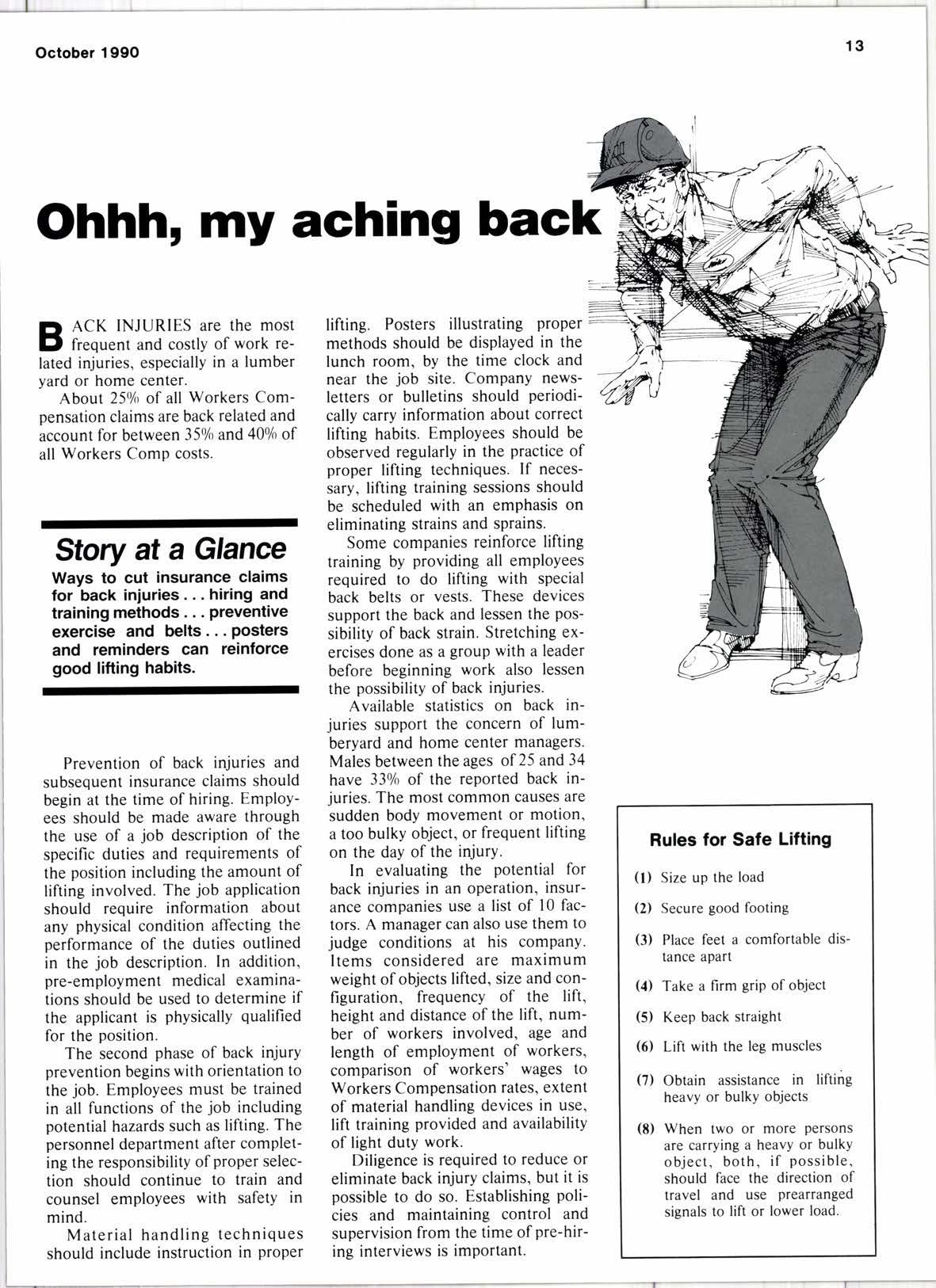
2 minute read
Ohhh, my aching back
Fr ACK INJURIES are the most El tiequ.nt and costly ol work related injuries, especially in a lumber yard or home center.
About 250/o of all Workers Compensation claims are back related and account for between 35% and 40% of all Workers Comp costs.
Story at a Glance
Ways tocut insurance claims for back injuries. hiring and training methods. Preventive exercise and belts. . . Posters and reminders can reinforce good lifting habits.
Prevention of back injuries and subsequent insurance claims should begin at the time of hiring. Employees should be made aware through the use of a job description of the specific duties and requirements of the position including the amount of lifting involved. The job application should require information about any physical condition affecting the performance of the duties outlined in the job description. In addition, pre-employment medical examinations should be used to determine if the applicant is physically qualified for the position.
The second phase of back injurY prevention begins with orientation to the job. Employees must be trained in all functions of the job including potential hazards such as lifting. The personnel department after completing the responsibility of proper selection should continue to train and counsel employees with safetY in mind.
Material handling techniques should include instruction in proper lifting. Posters illustrating proper methods should be displayed in the lunch room, by the time clock and near the job site. Company newsletters or bulletins should periodically carry information about correct lifting habits. Employees should be observed regularly in the practice of proper lifting techniques. If necessary, lifting training sessions should be scheduled with an emphasis on eliminating strains and sprains.
Some companies reinforce lifting training by providing all employees required to do lifting with special back belts or vests. These devices support the back and lessen the possibility of back strain. Stretching exercises done as a group with a leader before beginning work also lessen the possibility of back injuries.
Available statistics on back injuries support the concern of lumberyard and home center managers. Males between the ages of 25 and 34 have 330/o of the reported back injuries. The most common causes are sudden body movement or motion, a too bulky object, or frequent lifting on the day of the injury.
In evaluating the potential for back injuries in an operation, insurance companies use a list of l0 factors. A manager can also use them to judge conditions at his companY. Items considered are maximum weight of objects lifted, size and configuration, frequency of the lift, height and distance of the lift, number of workers involved, age and length of employment of workers, comparison of workers' wages to Workers Compensation rates, extent of material handling devices in use, lift training provided and availability of light duty work.
Diligence is required to reduce or eliminate back injury claims, but it is possible to do so. Establishing policies and maintaining control and supervision from the time of pre-hiring interviews is important.
Rules for Safe Lifting
(l) Size up the load
(2) Secure good footing
(3) Place feet a comfortable distance aparl
(4) Take a firm grip of object
(5) Keep back straight
(6) Lift with the leg muscles
(7) Obtain assistance in lifting heavy or bulky objects
(8) When two or more persons are carrying a heavy or bulkY object, both, if possible, should lace the direction of travel and use Prearranged signals to lift or lower load.










